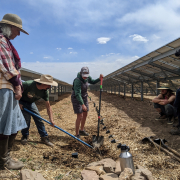Case Study: Boulder Housing Partners Triangle Solar Array
Written for the AgriSolar Clearinghouse by Allison Jackson, Colorado Agrivoltaic Learning Center
The Boulder Housing Partners Triangle Solar Array is one of the first solar arrays in the Boulder, Colorado, area that is solely dedicated to offsetting energy use for low-income residents. The array is a south-facing fixed array with the leading edge of the solar panels about two feet off the ground. Construction was completed in 2021, and the array will generate over 19 GWh of solar energy in the next 10 years.
This solar array was built on 3.8 acres of degraded, rocky soils with prairie dog burrows and overgrown weeds. It was not an ideal spot for agrivoltaics (co-location of photovoltaics and agricultural activities), but that is what makes the possibility of rehabilitating solar land so appealing. Byron Kominek, owner of Jack’s Solar Garden and executive director of Colorado Agrivoltaic Learning Center, and Duncan Gilchrist of The Nature Conservancy had ideas about repurposing the land around these panels. “If we can demonstrate the ability to grow vegetation in a south-facing fixed solar array built on some of the worst terrain you can imagine for agricultural activities, then we will know that agrivoltaics can work within any solar array site,” stated Byron Kominek. According to Duncan Gilchrist, “The Nature Conservancy’s interest in this project is to demonstrate a replicable model for agroecological land restoration within solar arrays that weren’t originally designed for agrivoltaics.”
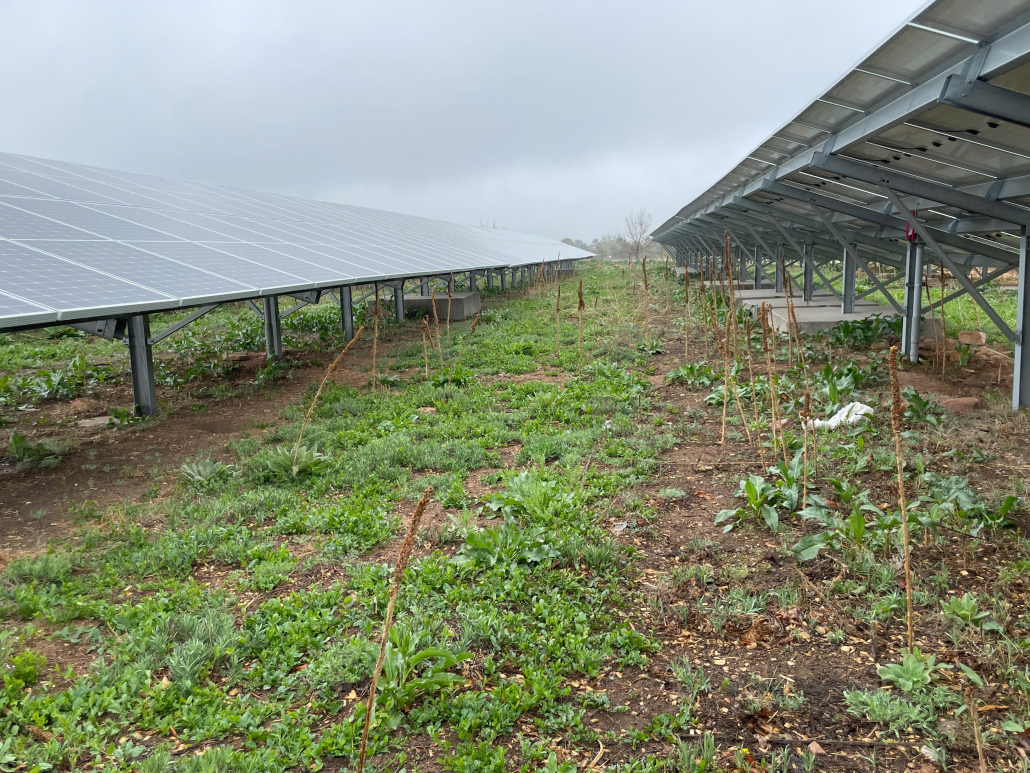
Area that has not been altered. Photo: Colorado Agrivoltaic Learning Center
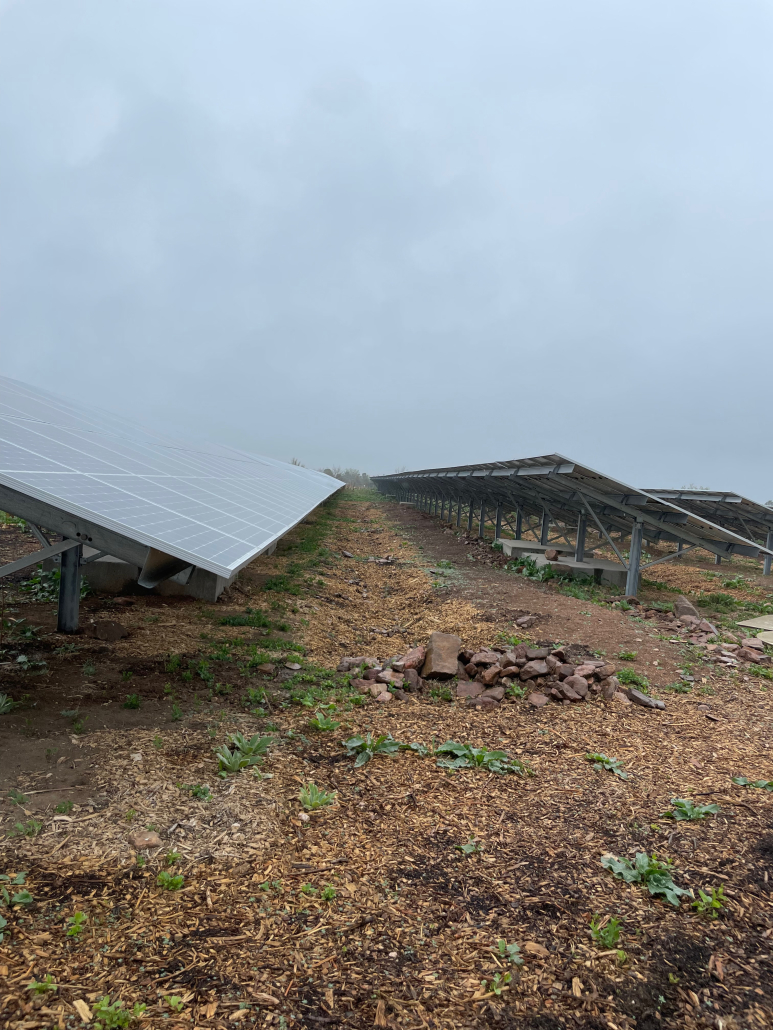
Area of the solar array with swales and perennial plantings. Photo: Colorado Agrivoltaic Learning Center
With no water source at this site, integrating agriculture into the semi-arid climate of Colorado is extremely difficult. So, in conjunction with the Drylands Agroecology Research, the landscape was altered utilizing permaculture ideas of slowing, spreading, and sinking rainfall to aid in water retention. A series of basins were dug and amended with compost at the leading edge of the solar panels to capture moist running off of the solar panels to sink the water deep within the soil’s profile. Having planted hundreds of hardy, drought-tolerant perennials, these basins will hopefully provide a repository of soil moisture for these plants during the driest months of the year. Utilizing the shade from the solar panels will also help slow evaporation from the soil and maintain a more even soil moisture.
The land was terraformed in November of 2022 with a mini-excavator and shovels. Perennial herbs were purchased and planted within the basins at the leading edge of the solar panels in April 2023. Irrigation was provided only at the time of planting for the perennials to get established. Herbs that were planted include fennel, lavender, lemon balm, oregano, rhubarb, thyme, and wild licorice. These plants will be monitored by researchers from the Dryland Agroecology Research group to assess their survivability and vigorousness.
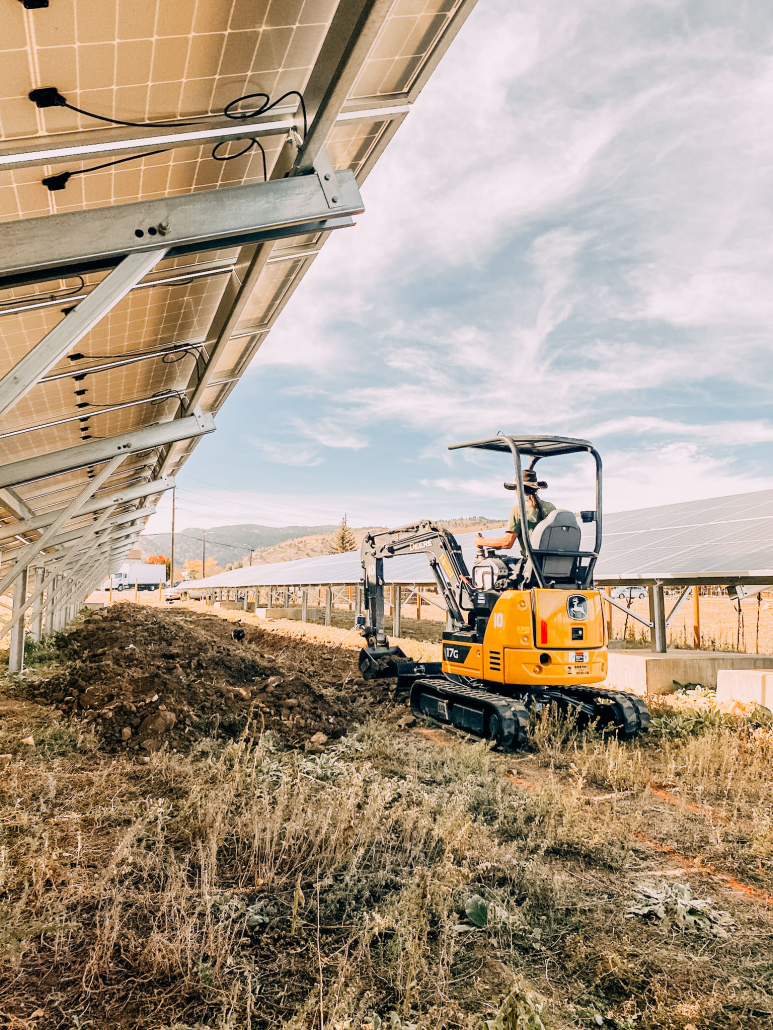
Terraforming the land in November of 2022 with a mini-excavator. Photo: Duncan Gilchrist, The Nature Conservancy
One benefit of having people within solar arrays stewarding the land is that they can catch system problems before the solar array asset owner does. Be it damaged panels, unsecured wires, or inverter errors, these issues can be easily monitored and relayed to the asset owner. In the long run, this can save asset owners money in operations and maintenance costs and potentially reduce the chances of lost revenues. During an initial site assessment for the viability of this agrivoltaics research project, consultants noted that the system’s inverters were offline followed by a discovery that the entire system was. The solar array asset owner was rapidly notified to alert their O&M team only to find out that the O&M company no longer serviced this site. The team also noticed that a small tree had grown up between two panels, shading their solar cells. These findings by the assessment team helped the solar array asset owner get their system back online, helped avoid future lost revenues, and kept their system running effectively.
With the wet spring and summer this year in Colorado, the perennials are growing and thriving. Hopefully, this project can be a model for retrofitting solar arrays and incorporating agriculture under the microclimates that solar panels provide.
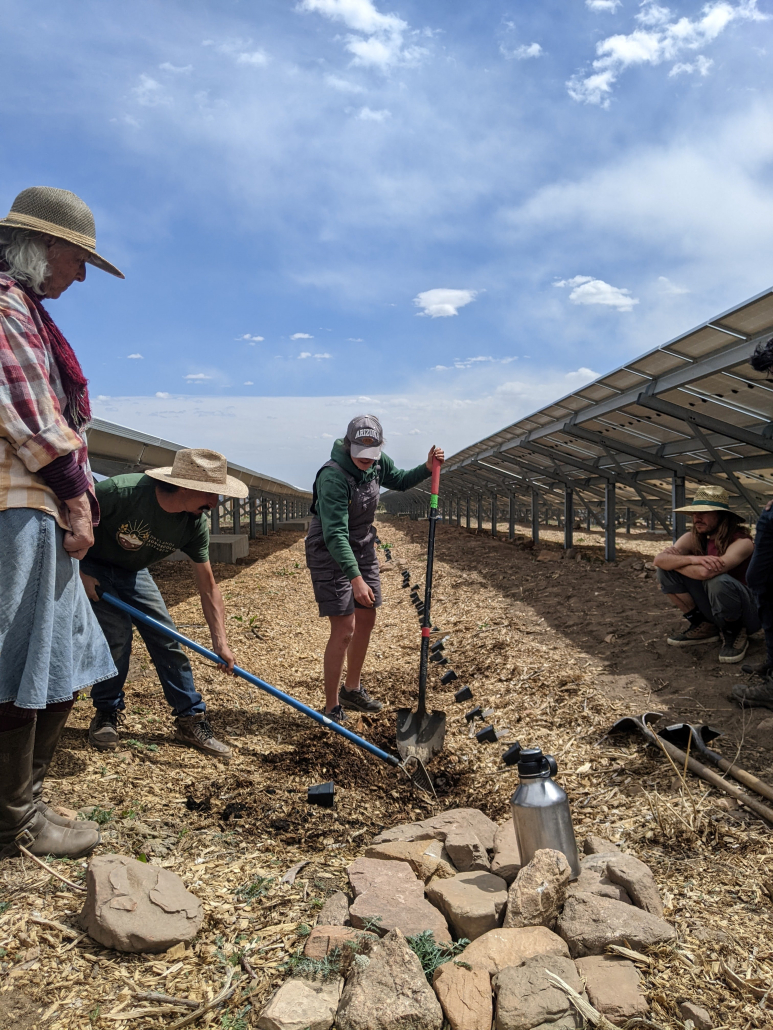
Planting perennial herbs within the basins. Photo: Duncan Gilchrist, The Nature Conservancy
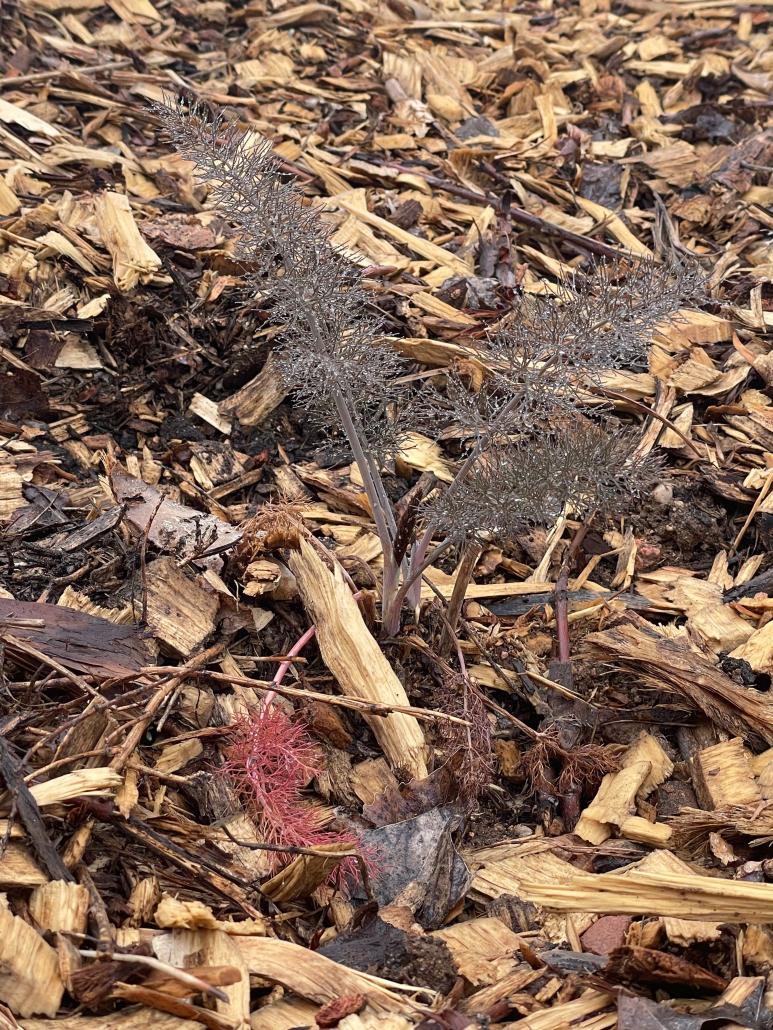
Bronze fennel plant thriving in the solar array. Photo: Colorado Agrivoltaic Learning Center

